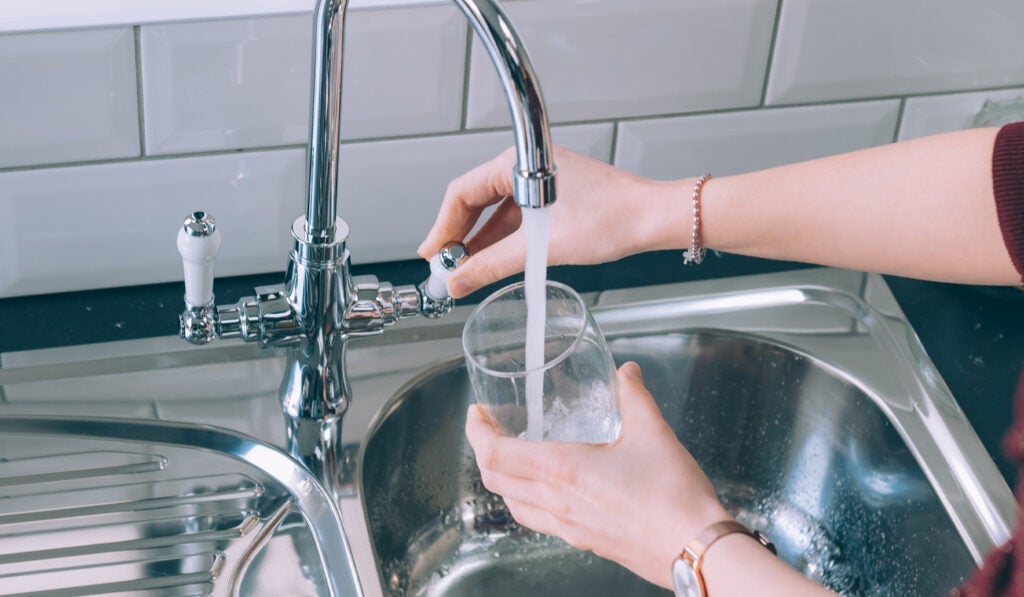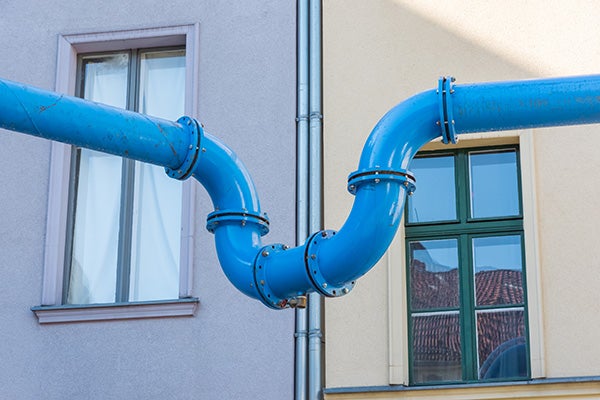Backflow & Cross Connection

Backflow is the reversal of the normal flow of a liquid or gas back into the potable water system, therefore contaminating the water supply.

Prevention Program
Help us protect the quality and safety of our water supply. Here’s a handy resource to learn more.
Understanding & Preventing Backflow
Two types of backflow
Back siphonage occurs when the supply line pressure falls below atmospheric pressure. This causes a vacuum or partial vacuum in our water system. The effect is similar to sipping water through a straw.
Back pressure occurs when the non-potable system pressure exceeds the potable water system pressure. This effect is similar to blowing air through a straw to create bubbles at the other end.
Backflow prevention
Steps to protect your drinking water
- The type of backflow prevention required is determined by the degree of hazard. This means that the severity of the actual or potential hazard will dictate the level of protection necessary to protect the community’s drinking water. Examples of places that would require a backflow assembly are irrigation systems, structures with fire sprinkler systems, car washes, dentist offices, hospitals, mortuaries, and more
- If we are unaware of the problem, please contact us so we can help find and remove cross-connection sources
- Remove any cross-connections you find or install an approved backflow prevention device (available at hardware stores) where needed
- If you have a backflow prevention device installed by a certified plumber, the device must be registered with us and be tested on an annual basis
a)Operational testing or work shall be performed by a qualified individual
b)Owner shall provide copies of the assembly test results, maintenance records, and overhaul records to us within 30 days of such completion or work
Safeguarding our community’s water supply is a team effort. By working with the Virginia Department of Health and you to identify backflow issues – we are protecting water quality.
The basic means of preventing backflow is an air gap, which either eliminates across-connection or provides a barrier to backflow. A mechanical backflow preventer is a device that creates a physical barrier to stop backflow.
The most common cause of a cross-connection is one of the most overlooked items in the home- a garden hose. Hoses left submerged in swimming pools, landscaping ponds, buckets or attached dispensers containing cleaning chemicals or pesticides are a cross-connection problem waiting to happen.
A hose-bib vacuum breaker should be attached to all outside spigots, per building codes. This device will help prevent a cross-connection, ensuring that your drinking water remains clean and safe.
The type of backflow prevention required is determined by the degree of hazard. This means that the severity of the actual or potential hazard will dictate the level of protection necessary to protect the community’s drinking water.
Examples of places that would require a backflow assembly:
- Irrigation systems
- Structures with a fire sprinkler system
- Car washes
- Dentist offices
- Hospitals
- Mortuaries
Backflow & Cross Connection Forms
Overview forms
 2024 Cross Connection Control and Backflow Prevention Program
2024 Cross Connection Control and Backflow Prevention Program  Backflow Test Report Form
Backflow Test Report Form
 Certified Backflow Testers List
Certified Backflow Testers List
 Certified List Application Form
Certified List Application Form